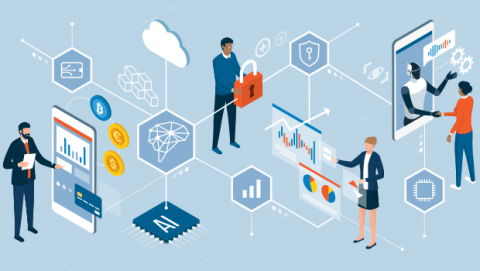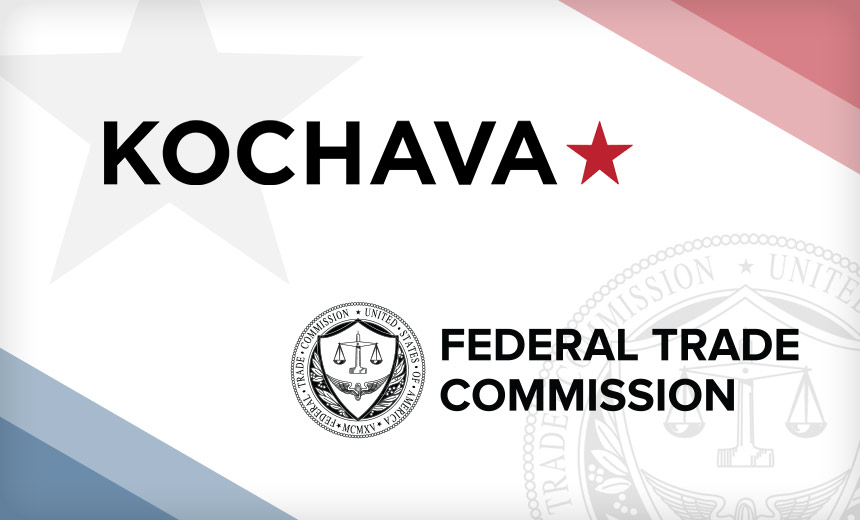The second age of foundational technologies

We’re being overwhelmed by a tsunami of new foundational technology. Artificial
intelligence (AI) is allowing computer systems to learn and solve problems that
humans can’t. CRISPR is letting scientists edit genes and program DNA.
Blockchain has brought new ways to think about money, contracts, and identity.
The list of paradigm-shifting innovations goes on, and includes 3D printing,
virtual reality, the metaverse, and civilian space flight. ... “When a
technological revolution irrupts in the scene, it does not just add some dynamic
new industries to the previous production structure. It provides the means for
modernizing all the existing industries and activities.” Let that sink in for a
minute. We are in the midst of “modernizing all the existing industries and
activities.” That means enormous, wrenching, society-overhauling change. We see
it all around us. Part of society is racing ahead with cryptocurrencies, social
media, AI, and on and on—while others fight to hold on to a way of life they’ve
always known. So, divides widen in society and politics, and between rich and
poor, and rising and falling nations.
The IT Leader’s Guide to Helping Developers Avoid Burnout
In this new era of work, it's imperative for team members – from the CEO down –
to have the ability to "read the virtual room" and have an understanding of what
developers are thinking and feeling based on the tone and content of online
interactions and conversations. Whether it’s Slack, Zoom, Teams or any other
collaboration tool, it’s not the same as communicating face-to-face with someone
who’s literally sitting at the same table. It’s possible to teach leaders the
skills necessary to manage effectively in this environment, but we’re also
seeing a rise of new and emerging leaders that are thriving because they place a
priority on empathy and personal connections, even when most of the
communication that takes place with their team members is digital. Paying
attention to online social cues can help leaders determine if and when team
members are stretching themselves too thin. Make no mistake, modern
communication tools have helped make work more productive and efficient. But the
best leaders are those who are able to analyze behavior on these tools so they
can offer team members support when it’s needed most.
Edge computing: 4 key security issues for CIOs to prioritize

“Edge computing can create more complexity, and this can make securing the
entire system more difficult,” says Jeremy Linden, the senior director of
product management at Asimily. “Still, there is nothing inherently less secure
about edge computing.” The big edge security risks should sound familiar –
compromised credentials, malware and other malicious code, DDoS attacks, and so
forth. What’s different is that these risks are now occurring farther and
farther away from your primary or central environment(s) – the traditional
network perimeter of yore is no longer your only concern. “Edge computing poses
unique security challenges since you’re moving away from walled garden central
cloud environments and everything is now accessible over the Internet,” says
Priya Rajagopal, director, product management, Couchbase. The good news: Many of
the same or similar tactics and tools organizations use to secure their cloud
(especially hybrid cloud and/or multi-cloud) and on-premises environments still
apply – they just need to be applied out at the edge.
Beyond Data Democracy: Why a Shift to Data Stewardship is Essential for Leadership Success
“Data democracy” has been heralded as the answer to this rapid cycle of
innovation—but it is not enough. These initiatives have noble intentions:
Sharing data and information about how users interact with products widely
should, in theory, help groups across the business—from marketing to IT—operate
from the same source of truth to stimulate better insights and better results
faster. In reality, however, data democracy fails to yield those conclusive
answers and shared goals. Too much raw data is difficult and time-consuming for
teams to interpret, especially as the flow of digital signals has surged, and
lacks the context needed to draw conclusions about the best path forward.
Instead, the data is so oppressively overwhelming to manage that departments
either give up or derive inaccurate conclusions—neither of which helps drive
sound decisions and productive partnerships. Rather, these conditions create a
new source of frustration and inefficiency for many engineering teams: the
entire organization has access to information ripe for misinterpretation, even
as expectations for results grow more urgent.
Microsoft Disrupts Russian Group's Multiyear Cyber-Espionage Campaign

Microsoft said its researchers have observed Seaborgium using stolen credentials
to directly log in to victims' email accounts and steal their emails and
attachments. In a few instances, the threat actor has also been observed
configuring victim email accounts to forward emails to attacker-controlled
addresses. "There have been several cases where Seaborgium has been observed
using their impersonation accounts to facilitate dialogue with specific people
of interest and, as a result, were included in conversations, sometimes
unwittingly, involving multiple parties," ... As far as the disruption goes, the
computing giant has now disabled accounts that Seaborgium actors have been using
for victim reconnaissance, phishing, and other malicious activities. This
includes multiple LinkedIn accounts. It has also developed detections for
phishing domains associated with Seaborgium. F-Secure, which refers to the
threat actor as the Callisto Group, has been tracking its activities since 2015.
In a 2017 report, the security vendor had described Callisto Group as a
sophisticated actor targeting governments, journalists, and think tanks in the
EU and parts of eastern Europe.
What is challenging successful DevSecOps adoption?
Although adoption is low for now, the study also confirms potential growth in
the industry with 62% of respondents saying their organization is actively
evaluating use cases or has plans to implement DevSecOps. “As organizations
adopt modern software development processes leveraging cloud platforms, they are
looking to incorporate security processes and controls into developer
workflows,” said Melinda Marks, senior analyst at ESG. “This research shows
DevSecOps can be a game changer for companies, and there is no doubt we will see
growing market traction over the next few years.” ... Companies believe that
establishing a culture of collaboration and encouraging developers to leverage
security best practices are nearly equal in importance to adopting DevSecOps
tools. While it is common to anticipate cultural transformation to be a
roadblock prior to adoption, those practicing DevSecOps report that technical
limitations, such as data capture and analysis, are actually greater barriers to
success.
Lawsuit Against FTC Intensifies Location Data Privacy Battle

The alleged dispute between Kochava and the FTC also comes in the wake of an
executive order by President Biden in July, following the Supreme Court Roe v.
Wade ruling. Among other actions, the executive order directed the FTC to
consider options "to address deceptive or fraudulent practices, including
online, and protect access to accurate information" (see: Biden Order Seeks to
Protect Reproductive Data Privacy). Kochava claims the government is making the
company a scapegoat. "The FTC's hope was to get a small, bootstrapped company to
agree to a settlement - with the effect of setting precedent across the adtech
industry and using that precedent to usurp the established process of Congress
creating law. Kochava disagreed with this scheme and asked the federal court in
Idaho to intervene," Mariam says. Also, among other allegations, Kochava's
lawsuit claims the FTC’s proposed enforcement action would overstep its legal
authority related to enforcing the FTC Act. The FTC declined ISMG's request for
comment on the Kochava dispute.
IT Job Market Still Strong, But Economic Headwinds Complicate Picture

David Wagner, senior research director with Computer Economics, says despite the
economic headwinds, about 60% of companies surveyed in the company's latest
report said they were planning to increase headcount -- the largest percentage
since the 2008 recession. “We continue to think this is a sign of more IT
headcount growth in the next few years,” he explains. “It comes with a small
caveat, of course, which is that the economic headwinds have gotten a little
stronger over the last couple of months than they were at the beginning of the
year.” However, from Wagner's perspective, IT has become so strategically
important to every business that particularly when it comes to IT staffing
companies are going to be as positive about their staffing and their IT spending
as they can be. “It's not a surprise when Google and Microsoft both announced
their most recent hiring freezes right around the time they were giving their
quarterly earnings,” he says. “I think what's going to happen is there's going
to be a pause as companies look around and figure out how bad things are going
to be.”
When it comes to changing culture, think small

To change the way people work together, Martin argues, leaders must model the
behaviors they want to see. “Literally the only way that I’ve seen culture
change in the 42 years since I graduated from business school is when a leader
sets out to demonstrate a different kind of behavior and makes that behavior
work. Other people take their cues from that behavior, and, slowly but surely,
the culture changes,” he says. “Kremlin-watching does not happen only in
Moscow—it’s an incredibly powerful force. People watch the leadership and do
what the leadership does.” A notable aspect of this approach is that it does not
require a major initiative or investment. Instead, the culture change depends on
micro-interventions: small adjustments to the structure, dynamics, or framing of
interpersonal interactions, applied consistently over time. Martin helped
orchestrate this kind of change while working with A.G. Lafley when he was the
CEO of Procter & Gamble. Lafley wanted to revamp the consumer giant’s overly
bureaucratic strategic process.
How To Do Data Governance Better

Business initiatives are built on data, and your data governance program needs
to support those objectives. For example, your business goal might be better
data discovery to make business reporting more easily consumed or findable. You
need to understand—and embrace—how data is consumed and used. This drives the
core metrics and dashboards for validating data and checking data quality. When
you scope out a core purpose or goal you’re trying to achieve in the first few
months or quarters, then you won’t get overwhelmed. A data domain represents the
logical grouping of data, either by item or area of interest, within an
organization. With these high-level categories in place, organizations can
assign accountability or responsibility for their data. Decentralized
consumption models make it possible for different teams to define categories
differently based on domain-level knowledge. They may use different names or
metrics for the same data. A shared vocabulary across all departments
standardizes how data is being used and accesdata sed, increasing alignment across
departments and making use and accountability easier for everyone.
Quote for the day:
"You don't lead by pointing and telling
people some place to go. You lead by going to that place and making a case."
-- Ken Kesey
No comments:
Post a Comment